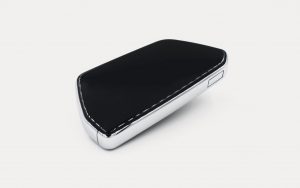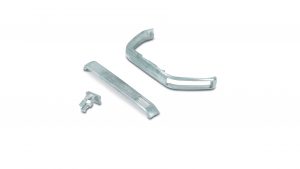Casting Study: Remote car release key, design elements
People carry this cast part with them in many variations: a design element of the car key. The demand for a high-quality look, an appealing, cool feel and the requirements for a robust, largely scratch-resistant surface led to the decision to use zinc as a material. Due to very high purchase quantities, the small size,
Due to the technically necessary very low tolerances and the required thin walls, repeatability is required. The award-winning casting convinced the jury due to the special gating technique used in the casting process – the individual parts are cast on over a narrow, hidden edge. The constellation of large quantities, gap-precise fitting accuracy and the required surface quality prompted the company to implement fully automatic, sequential production – from the casting process to electroplating. The cast parts are positioned appropriately for the further processing steps across production. The cast parts are automatically placed on several stations trimmed to reliably remove the sprue system and residual burrs. The partly small components are ground, polished and automatically fed to the in-house electroplating machine on specially developed transport and electroplating frames using robot technology. For the final quality control to ensure the above requirements, the robot-supported removal and visual inspection is carried out with high-resolution cameras. The closed, fully automatic process chain from casting to surface treatment is a perfect example of the implementation of Industry 4.0.

